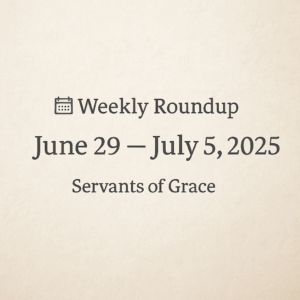⏱️ Estimated Reading Time: 5 min read
Happy Childhood Memories
When we look back on our childhoods, among many other happy memories, we may recall our parents reading with us. “Jack and the Beanstalk,” “Little Red Riding Hood,” “Three Little Pigs,” and multiple other children’s classics cast a warm hue upon our earliest recollections.
So why don’t we do the same with the Bible? Why don’t we read the Bible one-on-one with our children? Wouldn’t it be wonderful to give our children that best of memories? If you haven’t started such a practice, let me give you some guidance to start the ball rolling.
1. Give them a good reason to read the Bible.
Students do best when they are motivated by the ultimate aim of their studies. That’s why it’s so important to answer the “Why?” question up front, and to keep it in front, when reading the Bible with our children.
“Why are we doing this?”
“We’re reading the Bible together because we want to know and love God, and live our lives for his glory and the good of others.” That’s my purpose statement. Yours may be slightly different, but without it, we won’t sustain the practice of reading the Bible with our kids. And let’s remind them of that glorious purpose continually, so that they too can catch the motivation.
2. Establish a routine.
Like everything else in life, reading the Bible with our kids is much more likely to happen if it becomes part of our routine. It takes about 6–8 weeks to build a habit by doing something at the same time in the same place with the same person. There will be ups and downs in that period, with times of forgetfulness and catch-up, but it will eventually become part of the fabric of life.
Reading the Bible with our kids is much more likely to happen if it becomes part of our routine.
Try to find a slot in your schedule that you can commit to, push through the first 6–8 weeks, and you and your children will have formed a holy habit.
3. Be realistic.
As someone who once tried to teach my hyperactive five- and six-year-old sons Hebrew, believe me, I know the folly of unrealistic expectations. That lasted about four days. And that’s about how long many of our Bible reading plans last, too. We set Everest goals and don’t even get to base camp.
It took me many years to grasp the limitations of my children’s minds when it came to my spiritual ambitions for them. However, by the time the boys were about ten or eleven, I’d drastically lowered my goals, and then it began to click. We read less, but learned more.
4. Be systematic.
When I was young, if I ever opened my Bible, I did so randomly and just read some verses here and there. The result was a patchwork of Bible knowledge with no sense of an overall story, and no sense of connection between the passages, the chapters, the books, or the Testaments.
When reading the Bible with our kids, let’s do so systematically, reading whole books of the Bible together over time. Doing so will teach them to wrestle with harder passages, expose them to the whole counsel of God, and forge connections within books, between books, and between the Testaments.
5. Ask good questions.
Asking our children questions about what they read increases their concentration, cements the content, and helps them to apply it to their lives. When children are young, the focus should be on content using the familiar what, where, when, and who questions. The aim is to build up their store of Bible knowledge. As our children get older, we can ask questions more focused on the meaning and implications of the passages.
This simple, gospel-centered, 365-day Bible reading plan guides children ages 6–12 through the most important passages of the Bible, helping them see and appreciate the big-picture storyline of Scripture.
Two questions I’ve tried to keep asking my kids are: “What does this teach us about God?” and “What does this teach us about salvation?” Again, I hope that, by repetition, these questions become part of the fabric of their thinking processes. Other general questions might include, “What does this teach us about sin . . . the world . . . the Christian life . . . mission and evangelism?” and so on.
We should also invite questions from our children, although they will sometimes ask silly questions or perhaps even stump us from time to time. We mustn’t do anything that will stifle their inquiries and even when they strike us out, we simply say, “I don’t know but I’ll find out.” Then open Matthew Henry’s commentary or a good study Bible and make sure you do get back to them with an answer.
6. Ask God for help.
By praying before reading the Bible, we demonstrate to our children the need for heavenly help if we are to benefit from our reading. We show our dependence upon God as we ask him for light on his Word. After reading together, why not help your children to turn what you’ve read into prayers. What in this passage can we turn into a praise, a confession, a thanksgiving, or a request?
The aim in all this is to establish patterns and habits that will eventually result in them reading the Bible independently with profit and pleasure.
This is a guest article by David Murray, author of Exploring the Bible: A Bible Reading Plan for Kids. This post originally appeared on crossway.org; used with permission.



